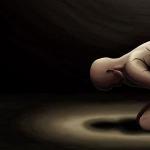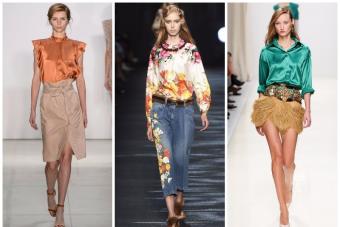From a very early age, a child needs to develop creative abilities, artistic flair and perception, develop the necessary motor skills, and stimulate mental activity. Construction classes are perfect for this. They also teach children to interact with each other, control their emotions, and teach them to work together. Of course, it is necessary to take into account the age of children when preparing such activities.
Methodological basis for teaching design in the younger group of kindergarten
Construction in a preschool educational institution is the process of children creating crafts and buildings from various materials (paper, plasticine, natural and waste materials, special construction kits and construction sets).
Goals and objectives
Children aged 1.5–3 years are introduced to various construction sets and construction sets and taught how to work with them. They explain the features of construction set elements and how to use them in buildings for various purposes (what is a brick, pyramid, cone, ball, plate, etc., how to use them in building models). Develop the ability to approach a given task creatively. They teach children to build according to a ready-made model, according to the image in the picture, and encourage the desire to build something on their own.
From a very early age, a child needs to develop creative abilities.
One of the objectives of design classes is to develop the eye and the ability to evaluate spatial relationships (build a small garage for a small car, a large bed for a large toy). The teacher teaches the children to use what they have built in further play and develops the children’s imagination. For example, a path made of plates can be a path through a forest, a highway, a railroad track, an airplane runway, etc. Various natural materials from which you can build a variety of crafts will also help develop children’s imagination.
An indispensable condition for conducting design classes is cleaning the workplace after yourself. This teaches kids to be neat.
Suitable materials for construction
For design classes in the younger group, it is best to use various construction kits and sets: plastic cubes, wooden sets, Legos, various building kits.
In addition to building with blocks, you can use other age-appropriate techniques and materials. So, multi-colored paper napkins are an excellent material for design. Traditionally, colored paper, cardboard and plasticine are used. Seasonal natural materials are also not ignored.
All parts of any construction sets for children 1.5–3 years old must be large
If the teacher wants to use appliqué elements in the lesson, then he will need to prepare the necessary details in advance, since children, due to their age, cannot yet do this on their own. It is also necessary to use a glue stick - children will have less opportunity to get smeared from head to toe and stain everything and everyone around them.
In the younger group, it is better not to give children tasks of varying difficulty. The element of competition is also inappropriate here. The only thing that can be used is slightly different tasks, but of the same complexity when working in a group. For example, students design furniture for a room. Some of the children make a bed, some make a chair, some make a table, etc.
All parts of any construction sets for children 1.5–3 years old should be large. This also applies to other materials - safety first!
Elements of play and learning in design classes
Design classes should also be educational and informative. Therefore, an introductory part is required at the beginning of the lesson. For example, the teacher is going to use autumn leaves. This is an excellent opportunity for kids to not only collect leaves for crafts on a walk, but also find out which leaf belongs to which tree, understand the difference between trees and shrubs, listen to poems, fairy tales and stories about nature.
If you are planning a lesson on designing furniture, it is worth showing pictures in advance, telling the children how furniture was made before, how it is made now, what materials are used to make furniture.
Children of any preschool age perceive information best during play. Therefore, it is advisable to play out every moment of the lesson, use rhymes, songs, fairy tales, and toys. Evaluation of work should also be carried out in a playful way.
Preparing and conducting design classes for the younger group
Let's look at examples of several design classes in the younger group of kindergarten.
Cubes and building sets
Using cubes and various building sets, you can conduct many thematic activities. This includes getting to know furniture, building bridges and arches, building fences, laying paths, and using various shapes for construction.
At the beginning of classes, you can explain what this or that part of the designer is used for, and what can be done with its help. Tell us that if you are going to build a staircase out of cubes, then the more steps you plan, the more cubes you will need. To explain the concepts of width and height, you can use small and large machines and build suitable gates for them.
When making furniture, also use different sizes: a small mouse sleeps on a small bed, and an elephant sleeps on a large one. Teach children how to make benches - high and low.
Using cubes and various building sets, you can conduct a number of interesting thematic activities
Be sure to build paths - narrow, long, wide, short. Then let the kids figure out how to use them in play. You can collectively come up with a story or fairy tale and act it out using small toys.
When building fences, tasks need to be made more difficult from lesson to lesson. First, children build a fence from identical parts, then they use parts of different sizes, alternating them, then they can take not only parts of different sizes, but also those that differ in color. You can build fences according to a model made by the teacher, or according to a picture.
The pens can also be played out using, for example, bird figurines. Here the birds hid in a pen. They sat down on the posts. They flew outside. But a bird of prey is flying - you need to quickly hide back.
Application of autumn leaves “Lion Cub”
Before this lesson, it is necessary to carry out preliminary work. You will need to print out an image of a lion cub from the cartoon “How the Lion Cub and the Turtle Sang a Song” on a piece of paper. You will also need plasticine and wide double-sided tape. You need to stick the tape along the edge of the paper without tearing off the top protective layer - the guys will do this.
On the eve of class, while walking, you need to collect beautiful autumn leaves and leave them to dry between sheets of newspaper and under pressure (otherwise the leaves will shrink and become brittle). Children can handle this quite well.
Immediately before class, children watch a cartoon. The teacher discusses with the kids how beautiful the lion cub’s mane is and how they will now make one from the prepared leaves.
Applique of autumn leaves will require a little preliminary work
The teacher gives the children sheets with a picture of a lion cub and plasticine. You need to spread a thin layer of plasticine over the mane on the sheet with your fingers, kneading it well. The teacher shows the children how to do this. Then beautiful yellow, red and orange leaves are glued on top of the plasticine. Then the protective layer is removed from the tape and the leaves are glued on top - you get a picture frame.
The amount of work in this task is too large for children of this age, so you can conduct as many as 4 lessons:
- We collect the leaves and lay them out to dry.
- Distribute the plasticine over the mane.
- We make a mane from leaves.
- Let's make a frame.
Application made from colored napkins “Umbrellas”
Napkins are an excellent material for children's creativity, which perfectly develops fine motor skills. To work, you will need to pre-print the outlines of the umbrellas on halves of an A4 sheet.
Necessary materials:
- glue stick,
- colored napkins,
- plates for balls.
Before the start of the lesson, the teacher tells the children why it rains, what an umbrella is for, the history of umbrellas, offers to listen to songs about rain or reads rhymes.
First, children tear the napkins into approximately equal pieces, and then roll them into balls with their fingers. Having made the blanks for the applique in this way, proceed to the main stage. The outline of the umbrella is filled with glue, and napkin balls are glued there.

Program content.
1. Ensuring children’s holistic perception of the picture.
2. Development of visual perception, spatial thinking.
3. Improving the skill of working according to a given scheme.
4. Formation of the ability to answer questions based on the picture (development of dialogic speech).
5. Increased speech activity.
Visual material.
Painting by O.R. Hoffman “We are building a house”, a large truck with blocks, a diagram for building a house from blocks, a bear toy.
Methodological techniques.
1. Display of the painting “We are building a house” by O.R. Hoffman.
2. Demonstration by the teacher accompanied by a song.
3. Independent work of children with explanation.
4. Acting out.
Preliminary work.
1. The arrival of the bear toy.
2. Examination of the painting “We are building a house” by O.R. Hoffman.
3. Physical education minute.
4. Reading the poem “Building a House” by O.R. Hoffman.
5. Playing with cubes on the carpet.
6. Playing off the building.
Used Books
1. Paramonova L. A. “Children’s creative design” - M.: Publishing house “Karapuz”, 1993.
2. “The role of plot construction in the mental education of a child of the second year of life” // preschool education. – 2005-№9
3. Education and training of children of primary preschool age: a book for kindergarten teachers / T.L. Bogina, T.T. Kazakova, E.A. Timofeeva and others; Edited by G.N. Todina, E.G. Tiyushnaya. – M.: Education, 1987.
4. Familiarization with the surroundings. Our kindergarten is a series of demonstration pictures with methodological recommendations for teaching preschoolers storytelling. Educational visual aid author - compiler N.V. Nishcheva, artist O.R. Goffman. St. Petersburg “Childhood – Press”.
Progress of the lesson.
A bear appears from under the gazebo.
Educator: Oh, guys, look who climbed under the gazebo there. Whose brown coat is this? Let's get a look. Who is this?
Children: Bear.
Educator: Exactly a bear. Let's say hello to him.
Children: Hello bear.
Bear: Hello.
Educator: Bear, why did you climb under the gazebo?
Bear: I decided to play hide and seek with you.
Educator: Our guys also love to play and look at pictures.
Bear: I also like to look at paintings.
Educator: Then sit down with us, little bear. Guys, sit down on the chairs too.
Today we will look at the painting “We are building a house.” Who do you see on it?
What are they doing?
They are building a house.
Kids in kindergarten built a house out of blocks. What kind of house did they get?
Big.
Beautiful.
High.
Multicolored.
What kind of roof does the house have?
Right. The house has a blue roof. How many windows are there in the house?
Two windows.
Right. The house has two windows and one door. What a beautiful house! The house turns out so beautiful because
The children build it together. Everyone works together. Let's look at how children build a house. Look at the boy in blue overalls and a white shirt. He brought the blocks in a big truck. The boy is sitting on the floor. He will probably be unloading the cubes now.
What is the boy doing in striped shorts and a colorful shirt? Where is he sitting?
On the floor.
What color is his crane?
Red.
Dice, what color does it raise?
Well done! A blond boy sits on the floor. He has a red crane. He picks up the blue cube. Now look at the girl. What is she doing?
She is standing behind the house.
What's in her hands?
She has a teddy bear.
Where does she want to put the bear?
To the house.
The bear will live in the house.
Fine! A curly-haired girl in a smart dress and a striped bow stands behind the house and wants to put a big brown bear cub in the house. What is the boy in the striped trousers doing?
What is he carrying?
Truck.
What's in the truck?
Right. A boy in red trousers is driving a truck. The truck has a black cab and yellow body.
What do you see in the picture on the left?
There is a closet there.
There are games in the closet.
What about the children?
There's a window there.
There is a flower on the window.
Look how cozy the kids' group is. Bright, spacious. There is a picture hanging on the wall, and elegant curtains on the window. Good for children in kindergarten.
Educator: Now, guys, let’s rest a little and remember the exercise:
Physical education minute:
“What a beautiful house!”
One two three four five.
(Children stand facing in a circle, hands on their belts, turn left and right).
Let's build and play.
(Perform squats rhythmically.)
We are building a big, tall house.
(Stand on tiptoes and stretch your arms up).
We are installing windows and roofing.
(Perform jumping in place).
What a beautiful house!
(They extend their arms forward with an index gesture.)
The little bear will live in it.
(They squat).
Educator: Now, guys, let's go to the mat.
Look what a truck arrived for us! He's big and beautiful. What color is it?
The truck has a red body and a blue cab.
And what kind of wheels?
Of course the wheels are black. Let's count them.
One two three four.
Four wheels.
What did the truck bring us?
What cubes?
Big ones.
Right. The cubes are big. They are bright and colorful. What color are they?
Reds.
Green.
Let's build a tall house out of cubes.
Look at the diagram. Which cubes should you take first?
Reds.
Right. Let's take and place three red cubes on the carpet. Which dice will we put on the red ones?
How many are there?
Right. Place two blue cubes on top of the red ones.
Which dice will you place on blue?
Green.
How many are there?
Also two.
Well done! Place two green cubes on top of the blue ones.
Look at the picture. What color turret will you put on the very top?
Yellow turret.
Great! Finish your work.
What have we done?
We built a house.
What kind of house did we get?
Big.
High.
Beautiful.
Educator: Let's ask the bear if he liked the house.
Bear: I really liked how cozy and big my house is. Thank you guys for the house. Now I will live in it.
Educator: To make the house stronger, let’s read the poem “Building a House”:
We are building a house - Om - Om,
Five of us - Om - Om,
Here's the window, here's the roof...
From - from - from, from - from - from.
Red cube, blue cube
Take us by car.
Take us by car.
The cube is red, the cube is blue.
The house grows - from - from.
The cat sees - from - from.
Here's the roof, and here's the pipe -
Ba-ba-ba, ba-ba-ba.
Educator: And now, guys. Let's say goodbye to the bear. Mishka is tired and wants to rest in his new house. Say goodbye to the bear.
Topic: “Help the bunny make a house”Program content:
· Teach children to build a house from bricks, place them vertically at a short distance from each other, and then tightly apply a brick lying horizontally on the long narrow side to them on one side.
· Introduce children to a new building part - a prism. Together with the children, examine it: point at the corners with your finger, run your palm along the edges.
· Prepare children to identify the main parts of a building (house, walls, roof, window).
· Develop a desire to communicate. Teach game actions.
Vocabulary work.
Activation of nouns: bunny, house, wall, roof, corner, brick, window, sun, ribbons.
Adjectives: big, small, even, smooth, sharp, cozy, beautiful, durable.
Prepositions: in, on, under.
Material: 3 blue bricks (large and small builder), prism (red), soft toy (big bunny), small bunnies for playing with.
Progress of the lesson:
Children enter the group and crying is heard.
Educator: Listen, children, who is crying here? Let's go look (they find the bunny).
Teacher: Olenka, ask: “Why are you crying, little bunny?”
Bunny: “I had a problem, a strong wind rose and broke my house in which I live.”
Educator: Children, how to help the bunny?
Children: Build a new house. (the teacher suggests repeating what the children will build)
Educator: Don’t cry, little bunny, we will build you a new house. We will build the house from blue bricks. What will we build the house from? (made of bricks)
Educator: Yura, please give me red bricks. Thank you.
Educator: Guys, look, I’m placing the brick on the short, narrow side. Like this. And the other brick is a little further. These are the walls. Tell me, Olya, what is this? (walls) (choral and individual speaking)
The teacher takes the prism and shows it to the children. “What kind of brick is this? Look guys, it looks like a roof. Run your palm over it. This is the roof. Find the corners on the roof (gesture with fingers). So what do we have here? (roof - choral answers). Smart kids! To make the bunny comfortable in the house, we will put the roof like this.
Educator: But where will our bunny look?
Children: Out the window.
Educator: Let's put another brick on the long, narrow side. Like this. This is a window. So you, bunny, now have a beautiful house with blue walls, a red roof and a window. (playing out) And now, kids, build a house for the bunny, he wants to come to visit everyone.
Children build, and the teacher explains and helps individually (playing out).
Whose is this, whose is this
New brick house?
These are children building a house,
So that bunnies can live in it.
The bunny comes to visit every house.
(Crying again)
Educator: Who else is crying there? Let's look, children (children find little bunnies).
Educator: Lena, ask why the bunnies cry?
Bunnies: We're cold.
Educator: Let us also build houses for them, only from small bricks (children build at tables).
The teacher gives an assessment on behalf of the bunny to each child. “What a wonderful house Olya has turned out to be, the walls are even. Yura's roof is strong, the rain won't get the bunny wet. These are the houses that turned out to be comfortable, durable, and cozy.”
Educator: The bunny and the bunnies are very happy that you helped them out of trouble, so they want to treat you (treating them with apples).
Joint play activities between the teacher and children.
Summary of a design lesson with children of the 1st junior group. Topic: “Crib for little fairies.”
Program content: Teach children to make simple buildings by demonstration. Learn to make a crib from bricks made of sponges lying flat and two other bricks placed vertically on the edges. Develop the ability to analyze and convey the relative arrangement of parts of an object in buildings. Cultivate a positive attitude towards action.
Handouts: sponges for each child, small dolls.
Musical accompaniment: “Waltz of the Flowers”, “Sounds of the Forest, Birds” “Lullaby”
Organizing time
Progress of the lesson. Music sounds, children enter the hall. The carpet is decorated with beautiful flowers.
Educator: Guys, look where we ended up? What beauty, how many beautiful flowers there are in our meadow.
“We came to a spring meadow and found magical flowers”
Everyone will come up to the flower and see who is hiding in the flowers? And little flower fairies live in flowers. Let's take them in our arms.
Guys, our little fairies are sleeping in the flowers, they probably feel uncomfortable sleeping.
Guys, what do you sleep on?
Children: On cots
Educator: Let's build beds for our little fairies.
Children carry their dolls to the table on which lies a box of sponges.
Educator: Guys, put your dolls on the table and let's remember what we used to build our cribs from?
Children: From cubes.
Educator: Look, what kind of box is on our table? Let's open it. Zhenya, what is in our box?
Zhenya: Sponges.
Educator: That's right, the box contains sponges, but unusual, magical ones. From these sponges we will build beds for our fairies.
Borya, what color are the sponges in our box?
Borya: Red, yellow, blue, green.
Educator: Well done, he said it correctly. Nastenka, are your sponges hard or soft?
Nastya: Soft.
Educator: That's right, the sponges are soft.
You can squeeze the sponge, it becomes small, and when you unclench it, the sponge becomes the same as it was, it has taken its shape.
Educator: And now I will show you how to properly build a crib for our fairies.
I'll take two sponges lying flat and connect them to each other with their long sides, then I'll put one more sponge on each side - these will be the backs of the crib. So I got a crib for my fairy.
Educator: Let's try it too. Everyone will take a sponge according to the color they like. Zhenya, what sponges will you take?
Zhenya: Red.
Educator: And you, Borya, what color will you take? Take it quickly.
Borya: Yellow.
Educator: Nastya, what color will she take?
Nastya: Green.
Educator: What color did you have left for Ilyushka?
Ilyusha: Blue.
Educator: Let's start building your cribs, and I will help you.
Slow music is playing. Children build their own beds for their little fairies.
Educator: Well done, your cribs turned out beautiful. Now let's put your fairies down and lull them to sleep.
A lullaby sounds, children clap and cradle their dolls.
Educator: Guys, your fairies fell asleep in a sweet dream.
Guys, what did we make our cribs out of today?
Children: From sponges.
Educator: Are the sponges soft or hard?
Children: Soft.
Educator: Well done guys, you all tried very hard.
Evgenia Bagul
Summary of a design lesson in junior group 1.
Summary of a design lesson in junior group 1.
Educator Bagul E. Yu.
Subject: "House for Bunny".
Program content:
Educational area "Cognition": Develop children’s ability to construct elementary buildings according to a model. Promote understanding of spatial relationships. Develop thinking and creativity through design, develop fine muscles of the arms;
Educational area "Communication": Stimulate the desire to participate in the conversation, develop auditory attention. Develop skills of polite treatment, goodwill, discipline;
activate in children’s speech words denoting primary colors, words: long - short, wide - narrow. Cultivate interest in design activities.
Material for classes: bunny toy, Lego, tape recorder with an audio recording of a song - game “The little gray bunny is sitting...”, noise of the forest.
Preliminary work: building a house from cubes, bricks,: looking at illustrations of houses, didactic game “What’s missing?”, outdoor game "The gray bunny is sitting".
Methodical techniques:
- Verbal: questions, reading a poem, asking a riddle;
- Gaming: game situation "The bunny is lost", psycho-gymnastics "Smile", outdoor game "The gray bunny is sitting";
- Demo: visual material.
Progress of the lesson.
Children sit on chairs.
Educator: Guys, stand in a circle and let’s show what a good mood we are in and share it with each other.
(children hold hands and pronounce words together with the teacher)
We woke up with the sun,
They stretched and smiled.
Hold hands together
I'll smile to myself
I'll smile at you.
I smile all day long
I'm not too lazy to smile!
Educator: Guys, I’ll tell you a riddle,
and you can guess who came to us.
Grow on the top of the head
Long ears.
Even though he is a boy,
And such a coward!
Well, guess what?
What's the name? (the Bunny toy appears).
Educator: Only he, for some reason, is sad.
The Bunny is crying in the clearing,
He misses his mother.
He chased a butterfly
Lost, lost.
Can't find home now
He is a trail in the wilderness of the forest.
Educator: Guys, what should we do? How can I help Bunny?
(children's answers) That's right, we need to help the bunny return home.
Let's imagine what kind of house our Bunny might have and build it.
What kind of house does the bunny have? Anya?
What parts does it consist of? Kolya?
(foundation, walls, roof, window)
Where is the foundation, show me? Pasha?
Where is the window, show me? Nikita?
Show me where the walls are? Lyosha?
Where is the roof, show me? Dasha?
Discussion with children about building a house.
Watch carefully how I will build the house.
The result was a durable, beautiful house.
Independent creative activity.
Now you get to work.
Individual questions
Who are you building a house for?
What color are the parts?
The result of joint activities.
Invite Bunny into the house.
Do you like the house?
Did it turn out to be a beautiful house?
Let's all play together?
Fizminutka "The gray bunny is sitting"
Gray bunny sitting
And he wiggles his ears. (makes ears on his head with his hands and moves them)
Like this, like this
And he wiggles his ears. (2 lines 2 times)
It's cold for the bunny to sit
We need to warm our paws. (claps his hands)
Like this, like this
We need to warm our paws. (2 lines 2 times)
It's cold for the bunny to stand
The bunny needs to jump. (jumps)
Like this, like this
The bunny needs to jump. (2 times)
The wolf scared the bunny.
The bunny jumped and ran away.
Did you like our game?
Everyone tried their best today. The bunny liked the house and also liked playing with you.
The bunny thanks you for your care, for such a beautiful, cozy house. Well done.
Publications on the topic:
Summary of an integrated lesson in design and modeling in the second junior group “Zayushkina Izbushka” PROGRAM CONTENT: To develop children’s ability to recite familiar poems and nursery rhymes. Strengthen the ability to build houses, reflect in the construction.
Summary of a comprehensive lesson on speech development and construction in the junior group “Here comes the truck” Summary of a comprehensive lesson on speech development and construction in the junior group “HERE CAME A TRUCK (toys) PURPOSE: 1. Develop.
Summary of a design lesson in the first junior group “Fence for pets” Topic: “Fence for pets” Purpose: To interest children in playing with building materials. Objectives: - To develop children’s ability to differentiate.
Summary of a design lesson in the first junior group“Fence for ducklings” Purpose: 1. To familiarize children with the details of building materials (“bricks”, options for arranging building forms on a plane.
Summary of a design lesson in the first junior group “Tower made of cubes” Summary of a design lesson in the first junior group “Tower made of cubes” Educator: Radaeva Nina Petrovna Integration of educational.
Goal: To teach children to perform the “Snowman” design. Objectives: Educational: continue to teach children to roll lumps of soft crumpled paper.





